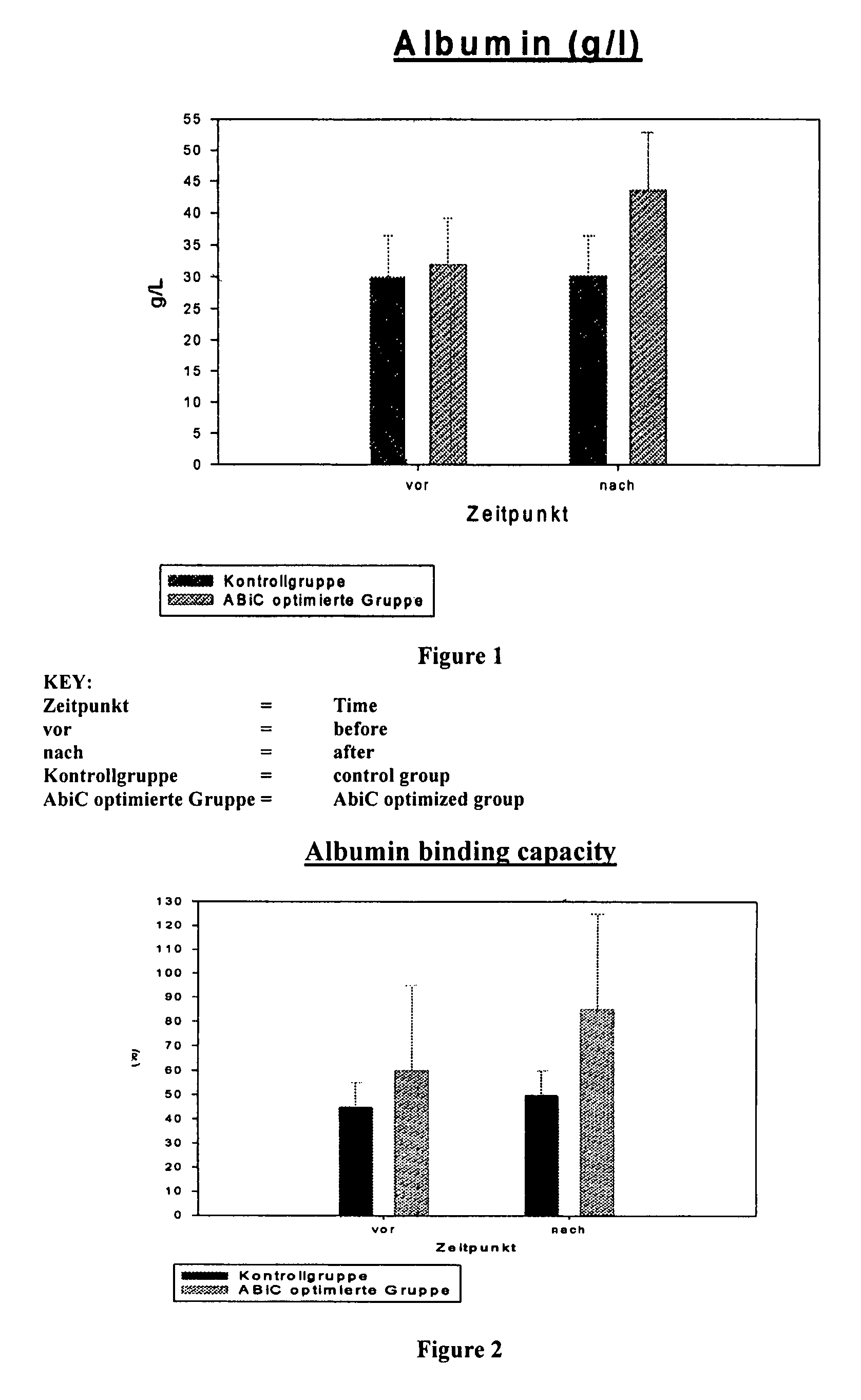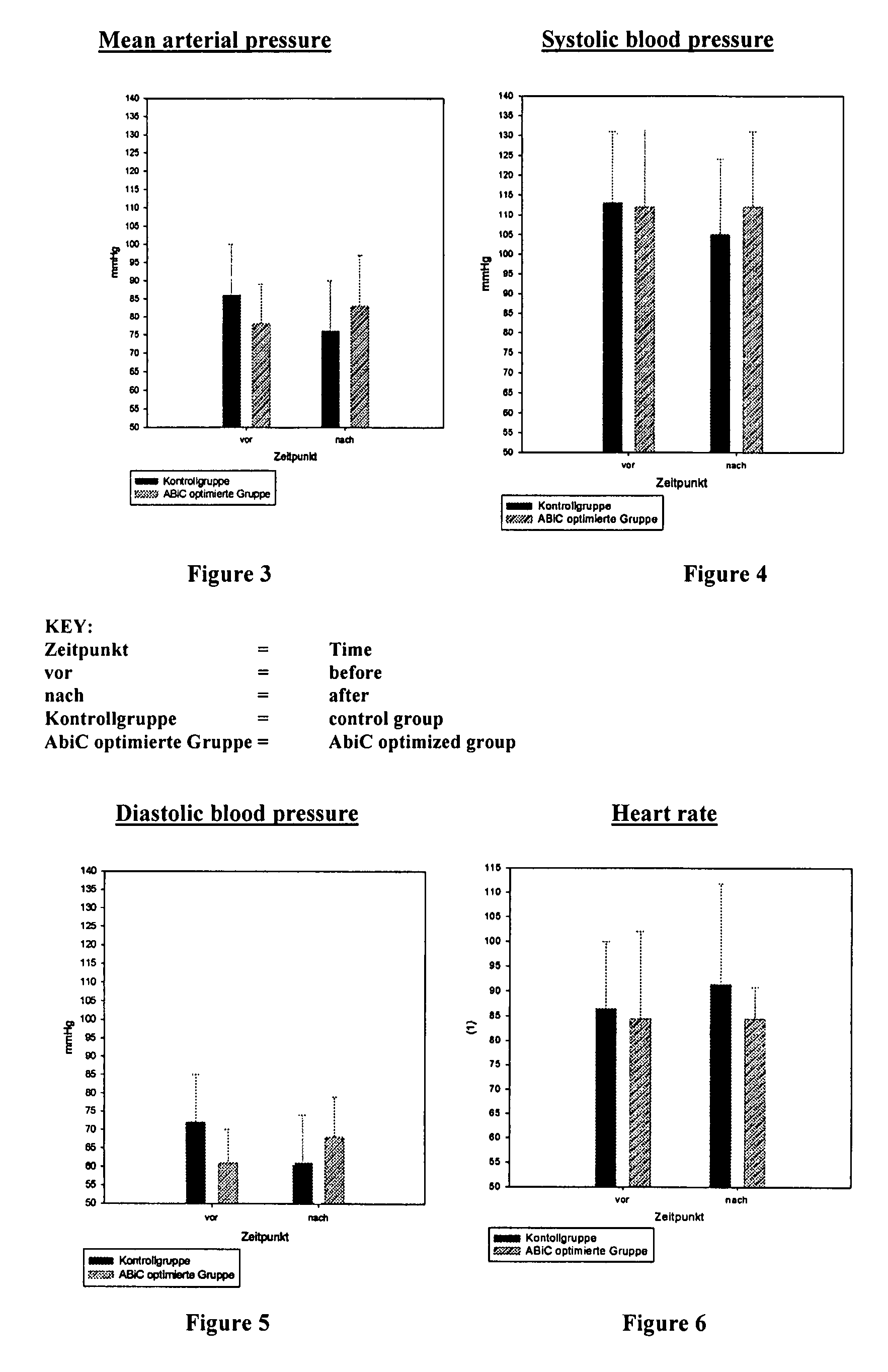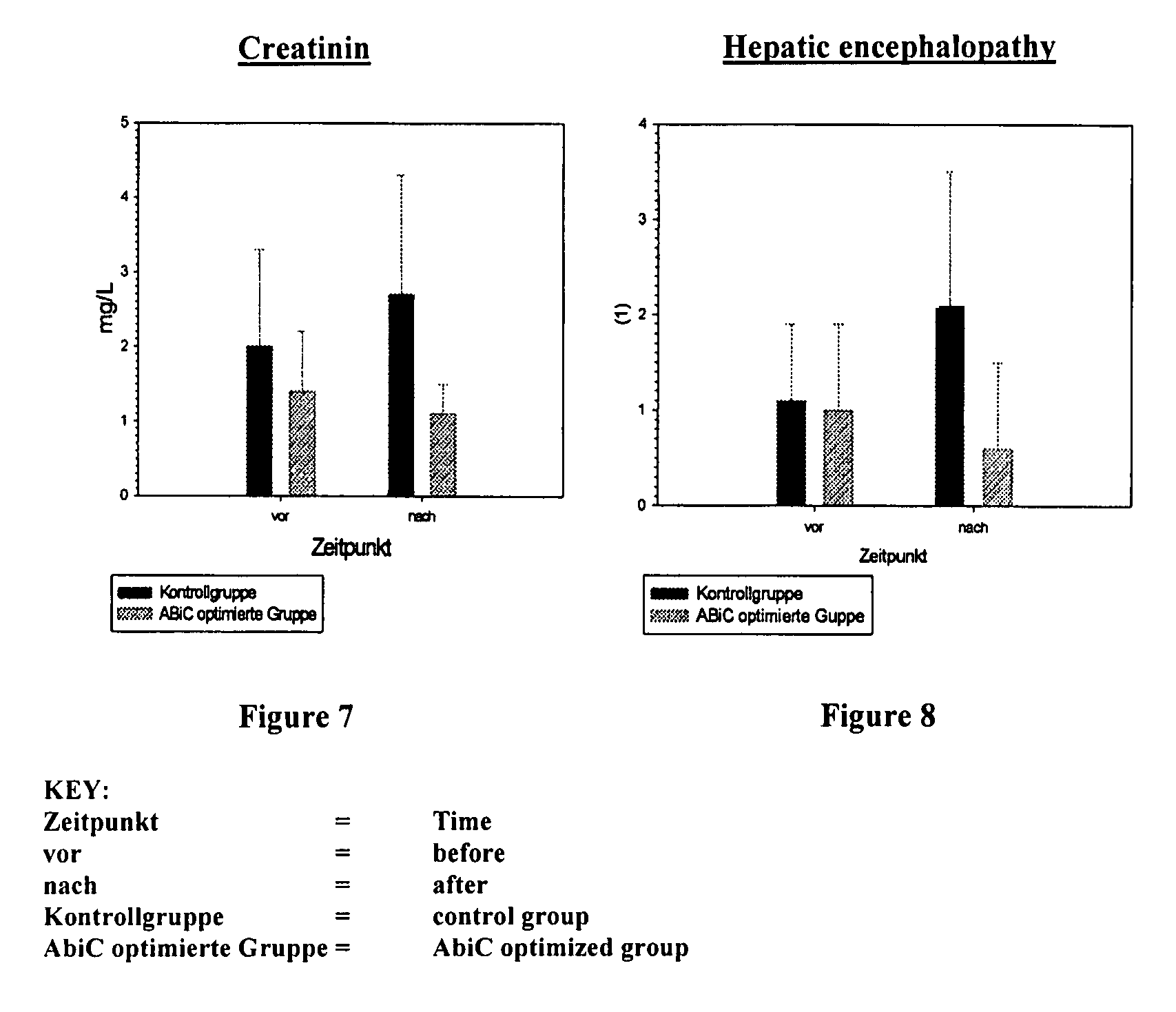Stabilizer molecule-depleted albumin solution
a technology of stabilizer molecule and albumin, which is applied in the direction of drug compositions, peptide/protein ingredients, extracellular fluid disorder, etc., can solve the problems of increased blood pressure, drop in blood pressure, and insufficient blood flushing of organs, so as to raise the albumin binding capacity, simple, fast and inexpensive
- Summary
- Abstract
- Description
- Claims
- Application Information
AI Technical Summary
Benefits of technology
Problems solved by technology
Method used
Image
Examples
example 1
Adsorption Material Powder in Packed Column
[0074]In an experiment to compare the efficiency as regards the depletion of stabilizer molecules from stabilized albumin solutions, various adsorption material preparations were produced and tested.
[0075]For two preparations of adsorption material of the invention, a defined activated charcoal Norit GAC 830 (Norit) was processed by grinding in an industrial grinder to various particle sizes. The particle sizes of the ground products was then measured microscopically and using a commercial particle analyzer. For the first batch of the invention (A1), Norit GAC 830 was ground to a particle size of 1 mm (D50) and for the second batch (A2), Norit GAC 830 was ground to a particle size of 0.1 mm (D50). D50 corresponds to the 50th percentile (see below). For comparison (V), a Norit ROX extruded charcoal (Norit) was used.
[0076]100 g of the activated charcoal materials were placed in a column with a diameter of 6 cm and a height of 10 cm provided w...
example 2
Suspensions of Activated Charcoal Particles in Fluidized Bed Reactors
[0088]In order to demonstrate that it is not enlarging the external surface of the activated charcoal by the grinding method but the adjusting the channels between the particles by the material to optimized mean channel diameters which is responsible for the success of the invention, in a further experiment adsorption materials with the same external surface area were examined with only the channel width being varied. The appropriate experimental vehicle in this case was the fluidized bed, in which fine particulate adsorption material is held in suspension by stirring, vibrating or convective or turbulent streaming.
[0089]In the fluidized bed, the spaces formed between the evenly distributed particles in the suspension form channels for the flow of the albumin. The channel diameter in the fluidized bed can be given to a good approximation using the following formula (II):
DK=[VWB0.33−(n0.33*DP)] / n0.33 (II)
wherein DK...
example 3
Fixing Adsorbers in Textiles, Open-Celled Foams or Mixed Powders
[0100]In the embodiment described below, the inventive distances between the adsorber particles, i.e. the channel widths, were “fixed” in a network which could be perused.
[0101]The particles of adsorption materials, for example activated charcoal, can thus be made into the form of a solid bed reactor using support textiles (for example polymer fibers), open-pored polymer foam structures (for example open-celled polyurethane foam) or simply by mixing highly porous particles as the “spacers”, which provides a sufficient spacing for the adsorption material particles from each other and thus provides the channel width batch by the invention. On fixing in highly porous, open-celled polymer foams, it is also possible at the same time or subsequently, to make channels, for example by drilling procedures. These channel widths also satisfy the rule which defines the relationship between the channel width and the minimum necessar...
PUM
| Property | Measurement | Unit |
|---|---|---|
| total length | aaaaa | aaaaa |
| total length | aaaaa | aaaaa |
| length | aaaaa | aaaaa |
Abstract
Description
Claims
Application Information
 Login to View More
Login to View More - R&D
- Intellectual Property
- Life Sciences
- Materials
- Tech Scout
- Unparalleled Data Quality
- Higher Quality Content
- 60% Fewer Hallucinations
Browse by: Latest US Patents, China's latest patents, Technical Efficacy Thesaurus, Application Domain, Technology Topic, Popular Technical Reports.
© 2025 PatSnap. All rights reserved.Legal|Privacy policy|Modern Slavery Act Transparency Statement|Sitemap|About US| Contact US: help@patsnap.com



